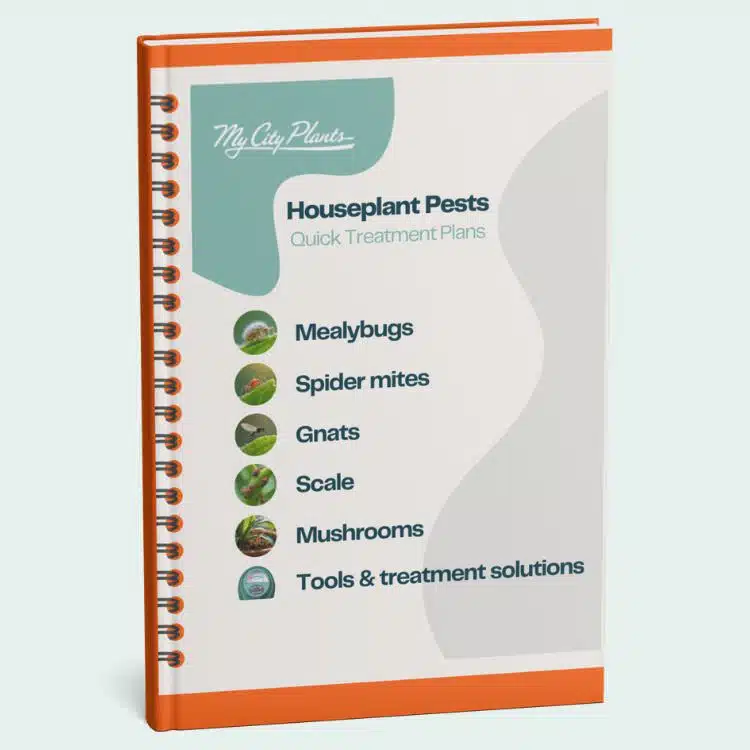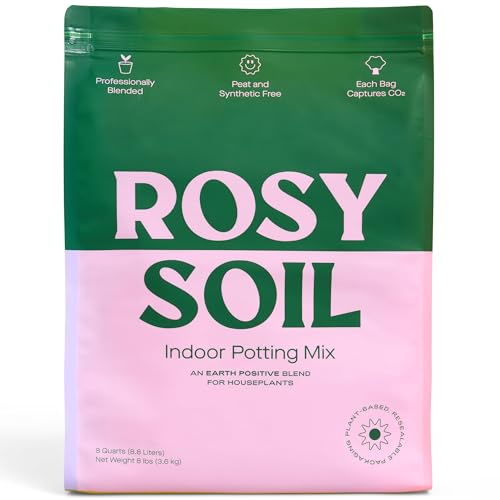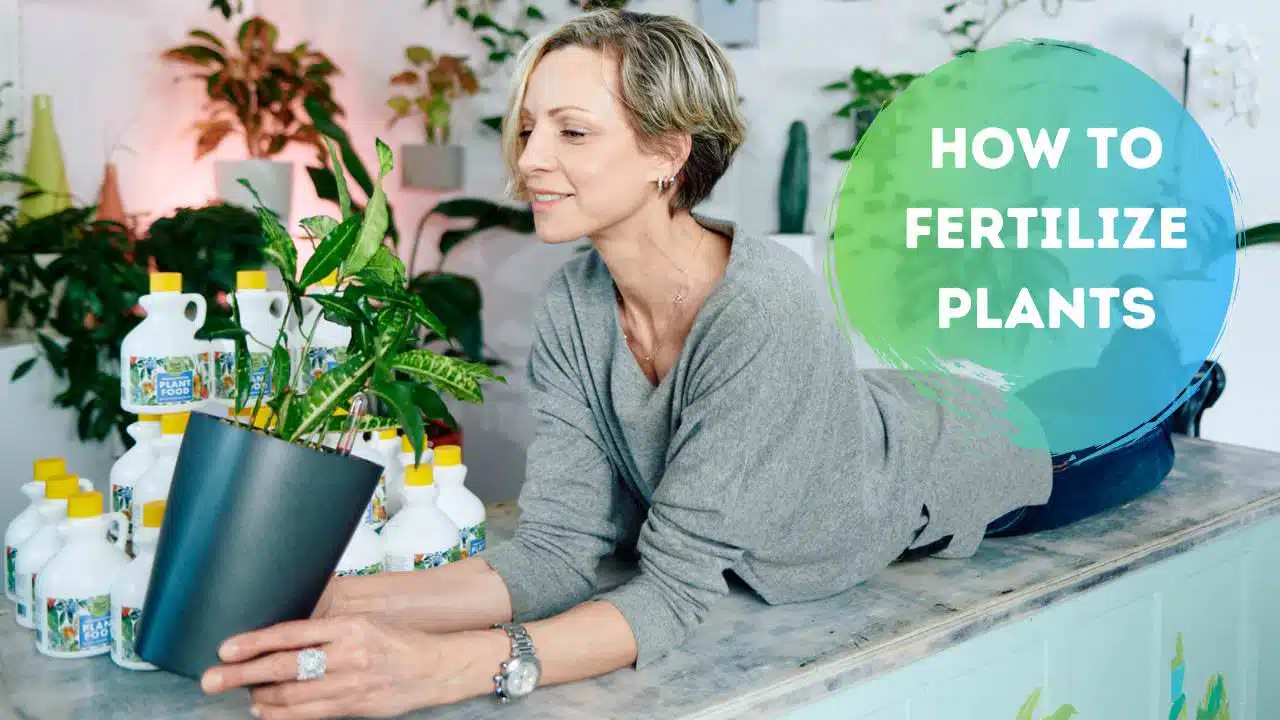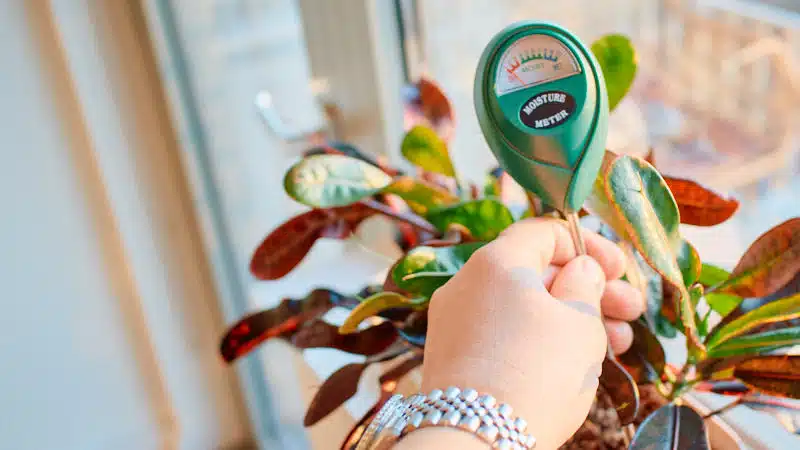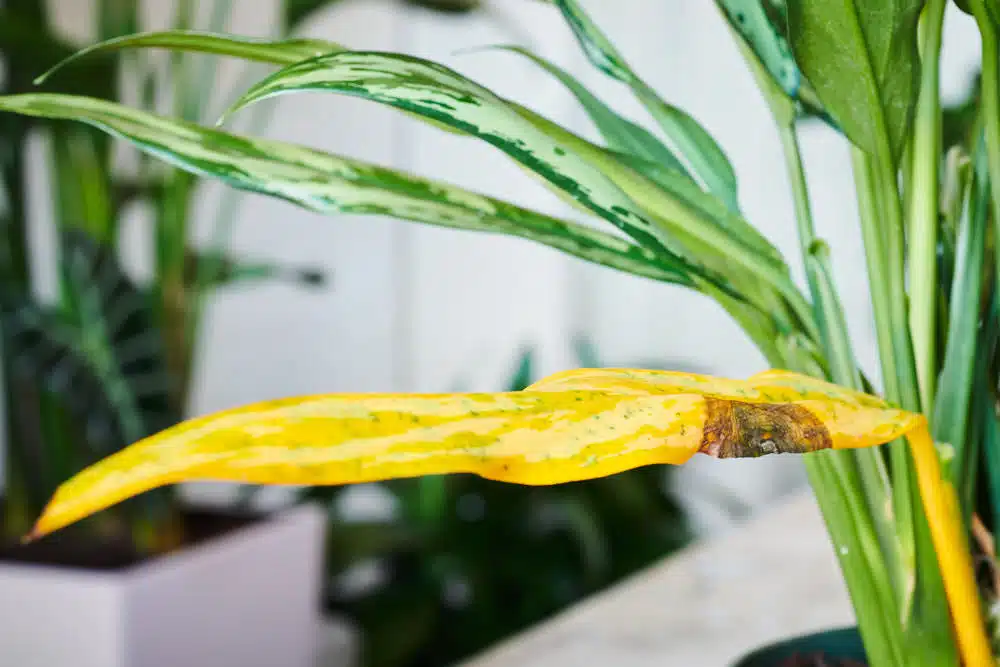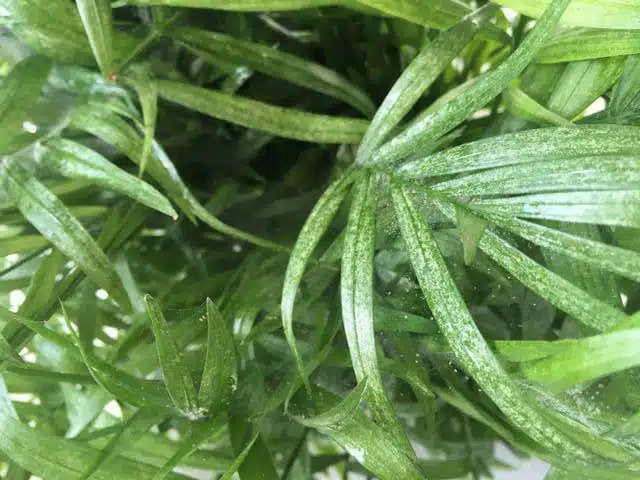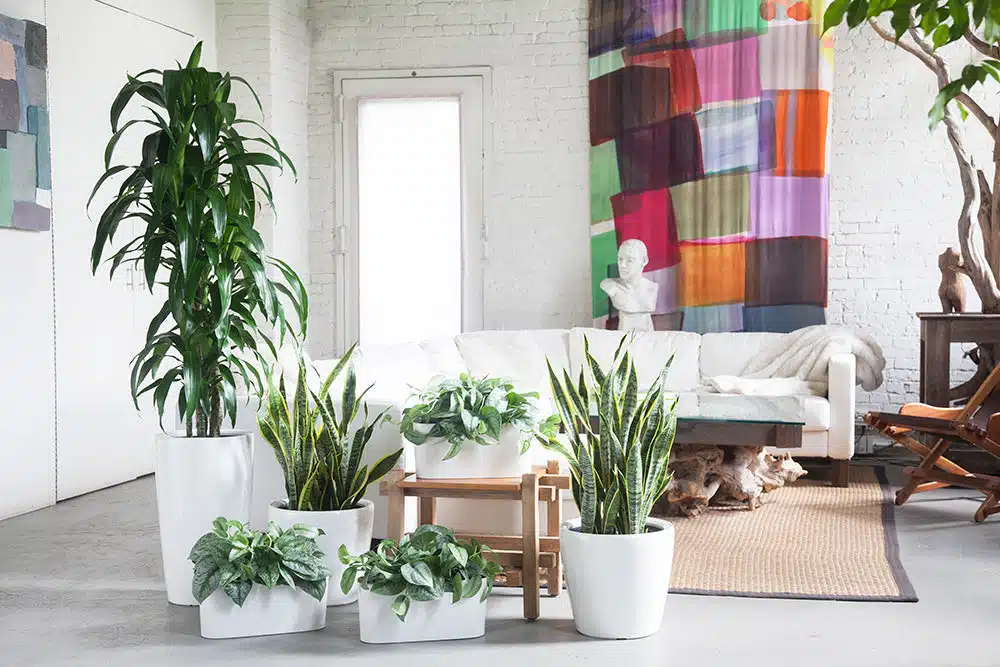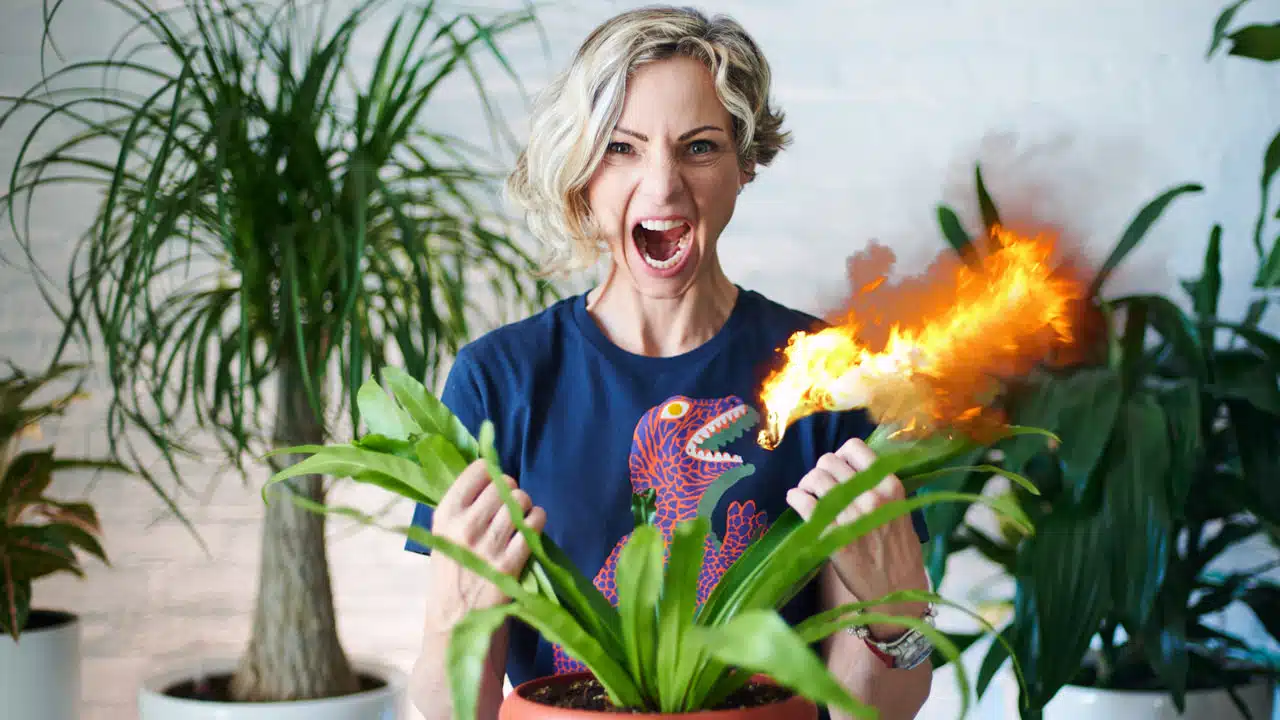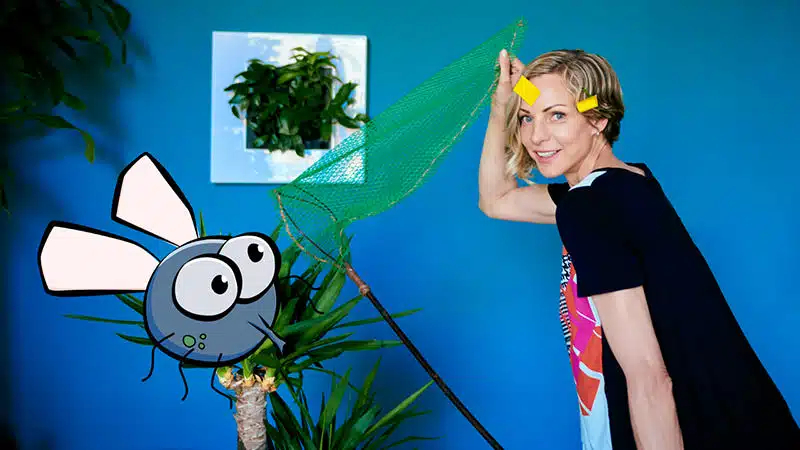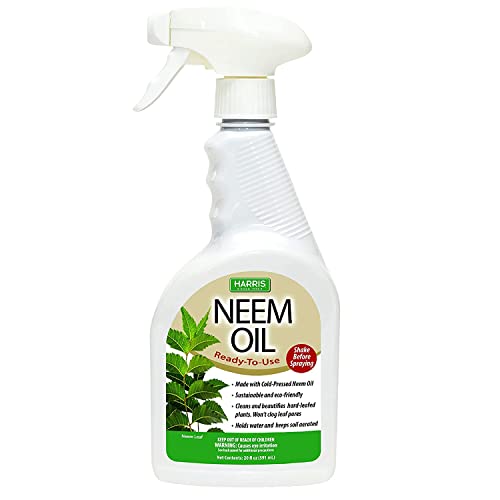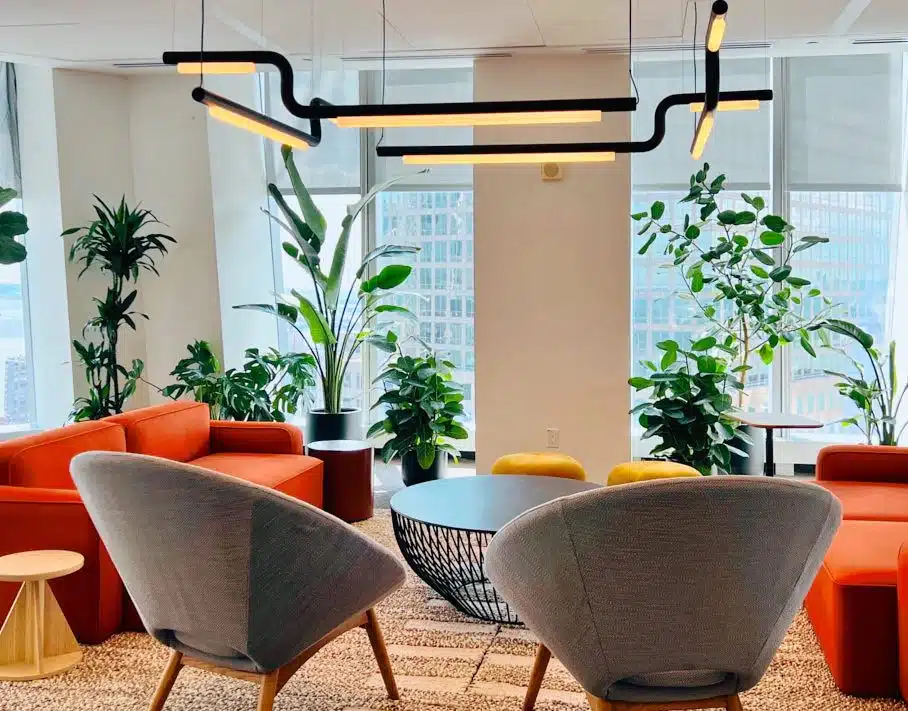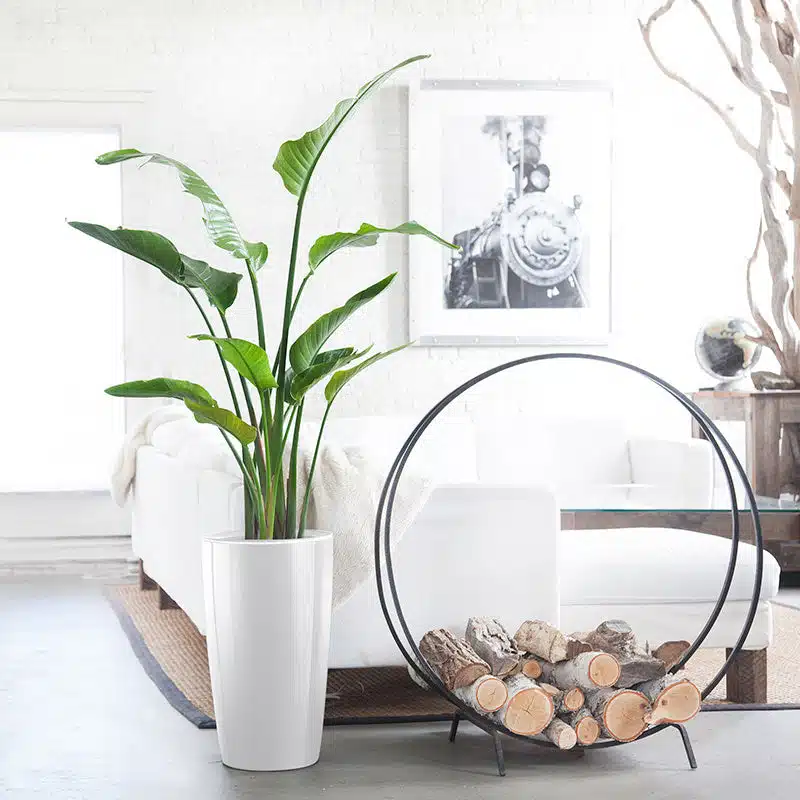Yikes! Mushrooms sprouting in your plants? Don’t worry—I’ve got you covered!
Spotting mushrooms in your houseplants can be surprising and a bit unsettling. Take a deep breath – this is totally fixable!
In this guide, I will explore why mushrooms are growing in your plants and walk you through what to do when mushrooms grow in your houseplants. Let’s turn that unexpected fungi appearance into an opportunity to make your green friends healthier.
Why Are Mushrooms Growing In My Plant?
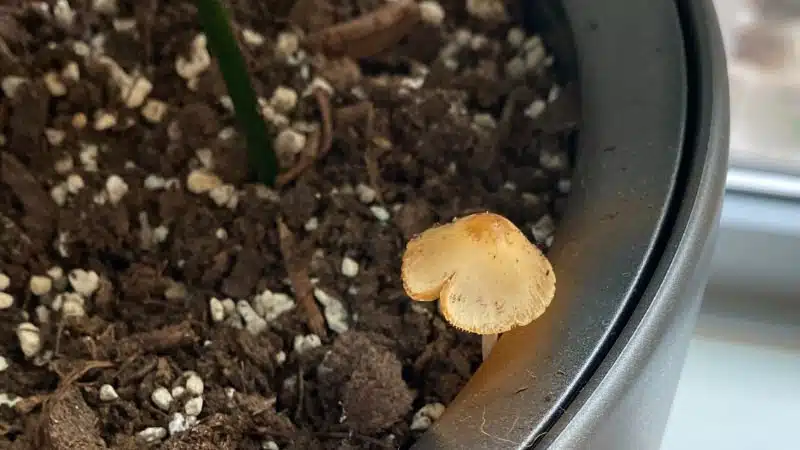
Before we dive into solutions, it’s important to understand what’s happening.
Mushrooms in houseplants are usually a sign that your plant’s environment is a bit too inviting for fungi. Here are the main reasons:
Overwatering And Moist Soil
Mushrooms thrive in moist environments.
If you’re watering your plants too frequently or use too much water per watering, the excess moisture creates a perfect breeding ground for fungi.
Overwatering not only encourages mushrooms but can also lead to root rot.
If you’ve overwatered your plants, don’t worry—check out my detailed guide on how to save an overwatered plant for step-by-step solutions.
High Humidity And Lack Of Airflow

Warm, humid conditions with little air circulation can cause mushrooms to appear.
This is especially common during late spring and summer months.
If you live in an area like New York, you might notice this issue more during these seasons.
This is when I receive the most questions and concerns from our customers, who often panic upon discovering mushrooms popping up in their houseplants.
Low Light And Slower Water Usage

In low light, plants use water more slowly, keeping the soil moist longer, which can lead to mushroom growth.
This is common in spaces with limited natural light.
Rich Organic Soil
Soils rich in organic matter provide food for fungi. While organic soil is great for plants, too much of it, combined with moisture, can encourage mushroom growth.
Are Mushrooms In Houseplants Bad?

Although a few mushrooms are not harmful to plants, they indicate that something is not right with your care routine.
If left untreated, the fungus can take over, rot the roots, and cause your plant to die.
Additionally, mushrooms can be toxic if eaten by your pets or yourself, so it’s important to avoid contact with them.
How To Get Rid Of Mushrooms In Houseplants

Ready to reclaim your plant’s pot? Follow these steps to safely remove mushrooms and prevent them from coming back.
Step 1: Prepare Your Tools
You’ll need:
- Gloves
- Chopsticks or a similar tool
- Fresh, dry potting soil
Having everything ready will make the process smoother and more effective.
Step 2: Carefully Remove The Mushrooms
- Put on your gloves to protect your skin from potential irritation.
- Gently dig out the mushrooms, making sure to remove the entire mushroom, including the base and any attached roots. Dig about two inches deep to ensure you’ve got it all.
- Dispose of the mushrooms in a sealed bag and throw them in the trash. Avoid composting them, as this can spread spores.
Step 3: Replace Contaminated Soil
- Remove the top two inches of soil from the pot, as it may contain fungal spores.
- Add fresh, dry potting soil to replace what you’ve removed. This helps eliminate any lingering spores and reduces moisture.
Step 4: Aerate the Soil

Use chopsticks or a similar tool to gently poke holes in the soil. This improves air circulation and helps the soil dry out faster, making it less hospitable to fungi.
Step 5: Adjust Your Watering Routine
- Check soil moisture before watering. Use your finger or a soil moisture meter to test the soil as deep as possible to ensure it is dry enough and the plant is ready to be watered.
- A soil moisture meter is a helpful tool to determine the watering frequency based on the moisture levels recommended for different plant types.
- Remove any excess water to prevent your plant from sitting in it.
Step 6: Improve Airflow and Reduce Humidity
- Place your plant in a well-ventilated area.
- Use a fan or open windows occasionally to increase airflow.
- Avoid overcrowding plants, which can trap humidity.
Step 7: Increase Light Exposure
- Move your plant to a brighter spot or add grow lights to improve light exposure.
Step 8: Ensure Proper Drainage
- Check that your pot has drainage holes to allow excess water to escape.
- Use well-draining soil to prevent water from lingering around the roots.
Preventing Mushrooms from Returning

Consistency is key in preventing mushrooms in houseplants from making a comeback. Here are some tips:
- Check the soil before watering: Always make sure the soil is dry enough before watering your plants. Test the soil in a few spots around the plant as deep as possible.
- Ensure proper drainage: It’s crucial to have drainage holes in your plant’s pot. This prevents root rot and allows for proper oxygen circulation. If your plant is potted in a pot without drainage, it’s best to repot it in a proper pot with drainage.
- Avoid standing water: Do not let your plants stand in water. If your plant has a drainage hole, keep the saucer clean and water-free. If your plant is in a cachepot, ensure there is no water standing at the pot’s bottom. Remember, plants should be repotted into a larger pot with drainage, especially if they are currently in plastic nursery pots.
- Monitor Humidity Levels: If your home is naturally humid, consider using a dehumidifier in rooms with plants.
- Regularly Inspect Your Plants: Early detection helps you address issues before they escalate.
- Rotate Your Plants: Changing their position can improve light exposure and airflow.
Frequently Asked Questions
Are mushrooms harmful to my houseplants?
While mushrooms themselves are not directly harmful to your plants, they indicate that the soil is consistently moist and the air circulation or light exposure might be low. This environment can lead to root problems over time. It’s best to adjust your watering routine, improve airflow and light exposure, and remove the mushrooms to maintain optimal plant health.
How do I remove mushrooms from my potted plants?
Wear gloves and carefully remove the entire mushroom, including the roots. Replace the top 2–4 inches of soil with fresh potting mix. Adjust your watering schedule to allow the soil to dry out between waterings.
Why are mushrooms growing in my houseplants?
Mushrooms thrive in constantly moist, organic-rich soil. Overwatering, poor drainage, low light exposure, and high humidity create an ideal environment for mushrooms to appear in your potted plants.
Should I be concerned about mushrooms if I have kids or pets at home?
Yes, it’s advisable to remove mushrooms from your houseplants if you have curious kids or pets, as some mushrooms can be toxic if ingested.
How can I prevent mushrooms from growing in my plants in the future?
✅ Adjust your watering schedule to ensure the soil dries out between waterings.
✅ Use a soil moisture meter to determine when your plants need water.
✅ Ensure your pots have proper drainage holes.
✅ Aerate the soil regularly to improve air circulation.
✅ Improve light exposure.
✅ Place your plants in well-lit areas with good airflow.
Do mushrooms indicate healthy soil?
Mushrooms can be a sign that your soil is rich in organic matter, which is beneficial. However, their presence also suggests that the soil is consistently moist, which may not be ideal for most houseplants.
Are mushrooms beneficial due to their symbiotic relationship with plants?
While certain fungi form beneficial relationships with plants in natural environments, the mushrooms commonly found in houseplants are usually a sign of overwatering. They don’t provide significant benefits to your indoor plants and may indicate potential issues with soil conditions.
Can I use fungicides to get rid of mushrooms in my plants?
It’s generally better to address the underlying issues—such as overwatering and poor soil conditions—rather than relying on fungicides. Adjusting your plant care routine is more effective and safer for your plants in the long run.
What should I do if mushrooms keep coming back even after removal?
✅ Remove a deeper layer (about 5 inches) of the old potting mix.
✅ Aerate the remaining soil to improve oxygen circulation.
✅ Add fresh potting mix on top after.
✅ Ensure your pot has proper drainage and isn’t too large for the plant.
✅ Monitor and adjust your watering routine accordingly.
Is it safe to dispose of mushrooms in the trash or compost?
Dispose of removed mushrooms in the trash to prevent spreading spores. Avoid adding them to your compost pile.
Will handling mushrooms spread spores to other plants?
To minimize the spread of spores, wear gloves when removing mushrooms and wash your hands and tools afterward. Consider replacing or cleaning gloves before handling other plants.
Can overwatering really harm my plants?
Yes, overwatering is one of the most common causes of houseplant issues. It can lead to root rot, and fungal growth, and attract pests. Using a soil moisture meter can help you to establish a proper watering frequency.
Final Thoughts

© My City Plants
Discovering mushrooms growing in your houseplant can be a bit of a shock, but it’s a manageable issue. By adjusting your care routine and creating less inviting conditions for fungi, you can enjoy healthy, mushroom-free plants.
Remember, the key is balance—providing enough water and humidity for your plant to thrive without creating a playground for mushrooms. With these steps, you’ll not only get rid of mushrooms in your houseplants but also become a more confident plant parent.
May Your Plants Grow Happy And Healthy!
To learn more about other plant pests and treatments check these blog posts:
How to get rid of Scale on Houseplants
Sources
Iowa State University Extension and Outreach – Mushrooms in Houseplant Pots
Iowa State University Extension and Outreach – Will yellow mushrooms harm my houseplant?
New England Botanic Garden – Surprise! You’ve got mushrooms in your houseplants
